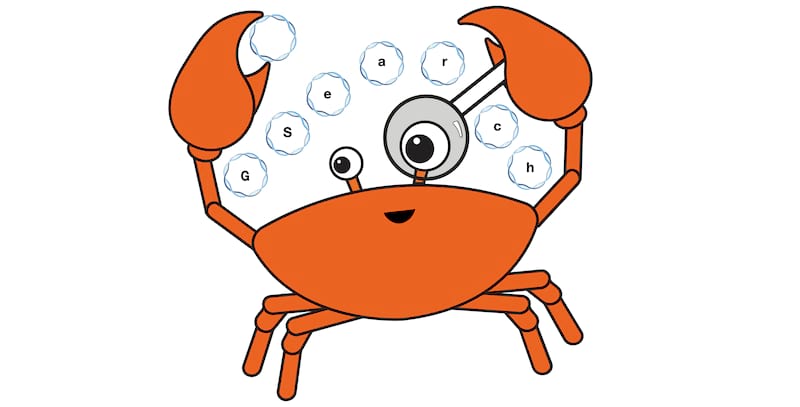8 releases
| 0.0.12 | Oct 29, 2022 |
|---|---|
| 0.0.11 | Oct 26, 2022 |
| 0.0.8 | Sep 26, 2022 |
| 0.0.7 | Aug 9, 2022 |
| 0.0.4 |
|
#14 in #hnsw
340KB
2K
SLoC

This crate changed name, it is now called : gsearch. The crate is yanked
A rust classifier based on probminhash and HNSW for microbial genomes
ARCHAEA stands for: A Rust Classifier based on Hierarchical Navigable SW graphs, et.al.. Later on, we renamed it to GSearch, stands for Genomic Search.
This package (currently in development) compute probminhash signature of bacteria and archaea (or virus and fungi) genomes and stores the id of bacteria and probminhash signature in a Hnsw structure for searching of new request genomes.
This package is developped by Jean-Pierre Both (https://github.com/jean-pierreBoth) for the software part and Jianshu Zhao (https://github.com/jianshu93) for the genomics part.
Sketching of genomes/tohnsw
The sketching and database is done by the module tohnsw.
The sketching of reference genomes can take some time (one or 2 hours for ~65,000 bacterial genomes of NCBI for parameters giving a correct quality of sketching). Result is stored in 2 structures:
- A Hnsw structure storing rank of data processed and corresponding sketches.
- A Dictionary associating each rank to a fasta id and fasta filename.
The Hnsw structure is dumped in hnswdump.hnsw.graph and hnswdump.hnsw.data The Dictionary is dumped in a json file seqdict.json
Requests
For requests the module request is being used. It reloads the dumped files, hnsw and seqdict related takes a list of fasta files containing requests and for each fasta file dumps the asked number of nearest neighbours.
Usage
### build database given genome file directory, fna.gz was expected. L for nt and .faa or .faa.gz for --aa. Limit for k is 32 (15 not work due to compression), for s is 65535 (u16) and for n is 255 (u8)
tohnsw -d db_dir_nt -s 12000 -k 16 --ef 1600 -n 128
tohnsw -d db_dir_aa -s 12000 -k 7 --ef 1600 -n 128 --aa
### request neighbours for each genomes (fna, fasta, faa et.al. are supported) in query_dir_nt or aa using pre-built database:
wget http://enve-omics.ce.gatech.edu/data/public_gsearch/GTDB_r207_hnsw_graph.tar.gz
tar xzvf ./GTDB_r207_hnsw_graph.tar.gz
cd ./GTDB_r207_hnsw_graph/nucl
### request neighbors for nt genomes
request -b ./ -d query_dir_nt -n 50
### request neighbors for aa genomes (predicted by Prodigal or FragGeneScanRs)
cd ./GTDB_r207_hnsw_graph/prot
request -b ./ -d query_dir_aa -n 50 --aa
### request neighbors for aa universal gene (extracted by hmmer according to hmm files provided)
cd ./GTDB_r207_hnsw_graph/universal
request -b ./ -d query_dir_universal_aa -n 50 --aa
Output explanation
Archaea.answer is the default output file in your current directory.
For each of your genome in the query_dir, there will be requested N nearest genomes found and sorted by distance (smallest to largest).
If one genome in the query does not exist in the output file, meaning at this level (nt or aa), there is no such nearest genomes in the database (or distant away from the best hit in the database), you may then go to amino acid level or universal gene level.
Dependencies, features and Installation
Features
-
hnsw_rs relies on the crate simdeez to accelerate distance computation. On intel you can build hnsw_rs with the feature simdeez_f
-
annembed relies on openblas so you must choose between the features "annembed_openblas-static" , "annembed_openblas-system" or "annembed_intel-mkl". You may need to install gcc, gfortran and make. This can be done using the --features option as explained below, or by modifying the features section in Cargo.toml. In that case just fill in the default you want.
-
kmerutils provides a feature "withzmq". This feature can be used to store compressed qualities on a server and run requests. It is not necessary in this crate.
Simple case for install:
Pre-built binaries will be available on release page (https://github.com/jean-pierreBoth/archaea/releases/tag/v0.0.10) for major platforms.
Otherwise it is possible to install/compile by yourself:
First install Rust tools
curl --proto '=https' --tlsv1.2 -sSf https://sh.rustup.rs | sh
archaea installation and compilation from Crates.io (Recommended)
- simple installation, with annembed enabled would be with intel-mkl
cargo install archaea --features="annembed_intel-mkl"
or with a system installed openblas:
cargo build --release --features="annembed_openblas-system"
- On MacOS, which requires dynamic library link (you have to install openblas first and then xz, the MacOS/Darwin binary provided also requires this):
(note that openblas install lib path is different on M1 MACs).
So you need to run:
brew install openblas xz
echo 'export LDFLAGS="-L/usr/local/opt/openblas/lib"' >> ~/.bash_profile
echo 'export CPPFLAGS="-I/usr/local/opt/openblas/include"' >> ~/.bash_profile
echo 'export PKG_CONFIG_PATH="/usr/local/opt/openblas/lib/pkgconfig"' >> ~/.bash_profile
cargo install archaea --features="annembed_openblas-system"
- Intel:
You can enable simd instruction with the feature hnsw_rs/simdeez_f.
Using openblas instead of intel-mkl you would run:
cargo build --release --features="annembed_openblas-system" --features="hnsw_rs/simdeez_f"
Archaea installation from the most recent version from github
- direct installation from github:
cargo install archaea --features="annembed_intel-mkl" --git https://github.com/jean-pierreBoth/archaea
- download and compilation:
git clone https://github.com/jean-pierreBoth/archaea
cd archaea
## build
cargo build --release --features="annembed_openblas-static"
###on MacOS, which requires dynamic library link:
cargo build --release --features="annembed_openblas-system"
Then install FragGeneScanRs:
cargo install --git https://gitlab.com/Jianshu_Zhao/fraggenescanrs
Some hints in case of problem (including installing/compiling on ARM64 CPUs) are given here
Pre-built databases
We provide pre-built genome/proteome database graph file for bacteria/archaea, virus and fungi. Proteome database are based on genes for each genome, predicted by FragGeneScanRs (https://gitlab.com/Jianshu_Zhao/fraggenescanrs) for bacteria/archaea/virus and GeneMark-ES version 2 (http://exon.gatech.edu/GeneMark/license_download.cgi) for fungi.
- Bacteria/archaea genomes are the newest version of GTDB database (https://gtdb.ecogenomic.org), which defines a bacterial speces at 95% ANI. Note that GSearch can also run for even higher resolution species database such as 99% ANI.
- Virus data base are based on the JGI IMG/VR database newest version (https://genome.jgi.doe.gov/portal/IMG_VR/IMG_VR.home.html), which also define a virus OTU (vOTU) at 95% ANI.
- Fungi database are based on the entire RefSeq fungal genomes (retrived via the MycoCosm website), we dereplicated and define a fungal speices at 99.5% ANI.
- All three pre-built databases are available here:http://enve-omics.ce.gatech.edu/data/gsearch
References
- Zhao, J., et al. GSearch: Ultra-Fast and Scalable Microbial Genome Search by combining Kmer Hashing with Hierarchical Navigable Small World Graphs. bioRxiv 2022:2022.2010.2021.513218. biorxiv.
Dependencies
~19–40MB
~581K SLoC